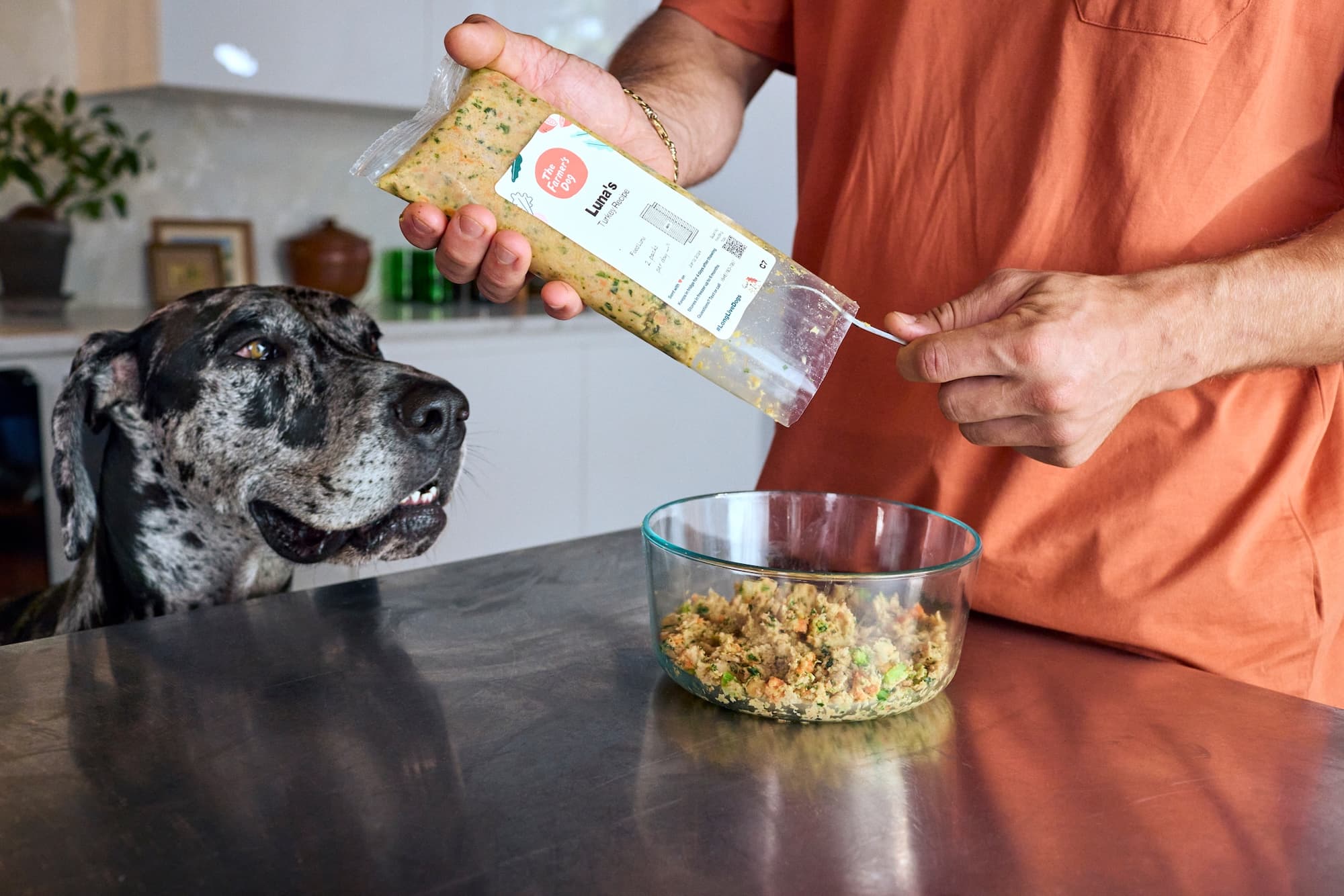Yes, dogs can eat pork. In fact, pork is one of the proteins we use in our own fresh dog-food recipes. But that doesn’t mean dogs can eat every type of pork, or pig out on an unlimited amount of it. Here’s what to know about serving your dog pork as part of a healthy diet.
Basic info on pork
Pork is the meat of a pig. It’s consumed as food by humans and many other animals. It can be cooked and eaten fresh, used as a sausage filling, or processed through smoking and salt curing to make products like bacon and ham. But, as we’ll explain below, humans should not feed their dogs the seasoned or heavily processed versions of pork—instead, they should stick only with the plain, cooked meat.
Can pork be good for dogs?
Yes, pork can be a healthy protein for dogs. It contains minerals, fats, amino acids, B vitamins, and other essential nutrients. Some vets also recommend trying pork as a protein source for dogs who are allergic or sensitive to other meats.
But your dog is best off eating pork in a complete and balanced food that’s suitable for daily feeding. Like all of our food, recipes that include pork were developed by board-certified nutritionists to be complete and balanced—and safe to feed for the life of your dog. Our recipes are made from whole meats and vegetables, and include added vitamins and minerals. And all our food is human grade, which means that all of the ingredients—and the facilities where the food is made—are subject to the same strict standards as human food.
If you’re giving your dog pork as a treat or a snack, it should be a lean cut, cooked and unseasoned, with visible fat trimmed away.
Skip heavily processed pork products like ham and bacon, and remember that all treats or extras combined should make up no more than 10% of a dog’s total calorie intake—otherwise, you’ll risk weight gain and the health problems that come with it.
The pork you feed your dog should also be cooked—raw or undercooked pork can contain pathogens that might make you or your dog very sick.
You may have heard that pork is too fatty for dogs, or can cause pancreatitis, but there’s no evidence that this is the case when it comes to the cuts of pork vets will tell you your dog can eat. While being overweight is a risk factor for pancreatitis, and fatty foods can be dangerous, that’s not true of cooked, lean, unseasoned pork.
Having said that, never give your dog pork fat or a fatty cut of pork—those can, indeed, be hazardous to their health. This goes for other meats as well—fatty table scraps are never a good idea for your dog.
If your otherwise healthy dog accidentally grabs a small piece of bacon or ham, don’t panic. They’ll probably be fine. However, certain dogs—either because of known health conditions or underlying differences that their humans don’t know about—have very little tolerance for even a small amount of increased fat in their diet, like what they’d get from grabbing a bit of bacon. If your dog experiences stomach pain, vomiting, or diarrhea after a dietary indiscretion of this sort, call your vet right away.
How much pork can dogs eat?
It depends. If your dog’s complete and balanced food is made with pork, they can eat as much of it as their daily calorie allotment allows (our pork recipe comes pre-portioned for your dog’s unique needs, so you know exactly how much to feed each day to maintain their healthy weight).
Overfeeding any food risks weight gain, which comes with serious health implications.
If you’re feeding your dog plain pork as a treat, only give them a little. Try using a tiny cube, maybe the size of a board-game die. All of your dog’s treats or meal toppers combined should make up a maximum of 10% of their daily calories. For an idea of how many calories are in a certain amount of pork—and to check other foods—reference the USDA’s FoodData Central tool.
Should I let my dog chew a pork bone?
No. A pork bone might splinter, causing possibly life-threatening emergencies like choking or intestinal blockages. Those warnings go for both cooked and raw pork bones. Raw bones also carry the risk of dangerous food-borne pathogens.
Chewing is important for dogs, but you’re much better off providing yours with something safe to gnaw on. Talk to your vet about safe options that will keep your dog busy and happy without imperiling their health.
All in all, if you follow the guidelines above, pork can be a safe and healthy part of a dog’s diet. Just remember that it should be lean, cooked, and unseasoned. And if you have specific questions about what’s right for your dog’s dietary needs, talk to your veterinarian.




